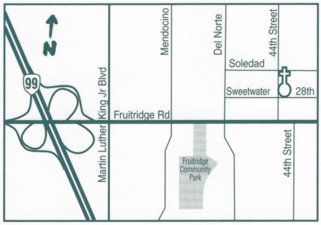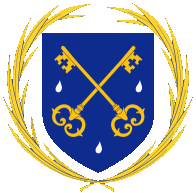
- This event has passed.
Chesterton Society Meeting
July 19, 2016 @ 7:30 pm - 9:00 pm
Hello, Everybody,
Just in time for your Fourth of July weekend! Here are your readings for the July meeting of the Sacramento Chesterton Society! I’m sure you were all wondering what to do with all that spare time on your hands.
We are up to Chapter Six in The Everlasting Man, “The Demons and the Philosophers”
The Father Brown story this month is The Green Man.
The meeting will be same time/same place – St. Stephen the First Martyr Catholic Church at approximately 7:30 pm.
In The Demons and the Philosophers, Chesterton concludes his “Comparative Religion” overview of pre-Christian Paganism. We get some hints in this chapter of what is to come in the next two chapters War of Gods and Demons, and The End of the World, where he focuses on the ultimate clash of the two types of ancient paganism. Very compelling reading!
Not that our current chapter is without interest. Here we have an exposition of the thought of those pagans who turned to devils – what they were thinking and what they hoped to achieve/receive. And just as he is beginning to whet our appetite for more, he stops and goes on to review the pagan philosophers. Its funny how all the sordid stuff grabs our interest and makes us want more. Or I guess we can view it as something adding tension to the plot of history.
There is a vary eloquent discussion of religious symbolism where he contrasts the cross with the main symbols of Asian philosophy/religion, usually a circle or some variation thereof. It should remind us of a similar passage from Orthodoxy.
I think I’ll close by leaving you with that passage from Orthodoxy, Contrast it with what he has to say in The Everlasting Man, in “The Demons and the Philosophers” The passages are certainly different, the one in Everlasting Man more fully developed. But it is certainly still consistent with his thought when he wrote Orthodoxy.
I’ll see you all on July 19th!
Spencer
”All that concerns us here, however, is to note that this panegoistic extreme of thought exhibits the same paradox as the other extreme of materialism. It is equally complete in theory and equally crippling in practice. For the sake of simplicity, it is easier to state the notion by saying that a man can believe that he is always in a dream. Now, obviously there can be no positive proof given to him that he is not in a dream, for the simple reason that no proof can be offered that might not be offered in a dream. But if the man began to burn down London and say that his housekeeper would soon call him to breakfast, we should take him and put him with other logicians in a place which has often been alluded to in the course of this chapter. The man who cannot believe his senses, and the man who cannot believe anything else, are both insane, but their insanity is proved not by any error in their argument, but by the manifest mistake of their whole lives. They have both locked themselves up in two boxes, painted inside with the sun and stars; they are both unable to get out, the one into the health and happiness of heaven, the other even into the health and happiness of the earth. Their position is quite reasonable; nay, in a sense it is infinitely reasonable, just as a threepenny bit is infinitely circular. But there is such a thing as a mean infinity, a base and slavish eternity. It is amusing to notice that many of the moderns, whether sceptics or mystics, have taken as their sign a certain eastern symbol, which is the very symbol of this ultimate nullity. When they wish to represent eternity, they represent it by a serpent with his tail in his mouth. There is a startling sarcasm in the image of that very unsatisfactory meal. The eternity of the material fatalists, the eternity of the eastern pessimists, the eternity of the supercilious theosophists and higher scientists of to-day is, indeed, very well presented by a serpent eating his tail, a degraded animal who destroys even himself.
”This chapter is purely practical and is concerned with what actually is the chief mark and element of insanity; we may say in summary that it is reason used without root, reason in the void. The man who begins to think without the proper first principles goes mad; he begins to think at the wrong end. And for the rest of these pages we have to try and discover what is the right end. But we may ask in conclusion, if this be what drives men mad, what is it that keeps them sane? By the end of this book I hope to give a definite, some will think a far too definite, answer. But for the moment it is possible in the same solely practical manner to give a general answer touching what in actual human history keeps men sane. Mysticism keeps men sane. As long as you have mystery you have health; when you destroy mystery you create morbidity. The ordinary man has always been sane because the ordinary man has always been a mystic. He has permitted the twilight. He has always had one foot in earth and the other in fairyland. He has always left himself free to doubt his gods; but (unlike the agnostic of to-day) free also to believe in them. He has always cared more for truth than for consistency. If he saw two truths that seemed to contradict each other, he would take the two truths and the contradiction along with them. His spiritual sight is stereoscopic, like his physical sight: he sees two different pictures at once and yet sees all the better for that. Thus he has always believed that there was such a thing as fate, but such a thing as free will also. Thus he believed that children were indeed the kingdom of heaven, but nevertheless ought to be obedient to the kingdom of earth. He admired youth because it was young and age because it was not. It is exactly this balance of apparent contradictions that has been the whole buoyancy of the healthy man. The whole secret of mysticism is this: that man can understand everything by the help of what he does not understand. The morbid logician seeks to make everything lucid, and succeeds in making everything myster- ious. The mystic allows one thing to be mysterious, and everything else becomes lucid. The determinist makes the theory of causation quite clear, and then finds that he cannot say “if you please” to the housemaid. The Christian permits free will to remain a sacred mystery; but because of this his relations with the housemaid become of a sparkling and crystal clearness. He puts the seed of dogma in a central darkness; but it branches forth in all direc- tions with abounding natural health. As we have taken the circle as the symbol of reason and madness, we may very well take the cross as the symbol at once of mystery and of health. Buddhism is centripetal, but Christianity is centrifugal: it breaks out. For the circle is perfect and infinite in its nature; but it is fixed for ever in its size; it can never be larger or smaller. But the cross, though it has at its heart a collision and a contradiction, can extend its four arms for ever without altering its shape. Because it has a paradox in its centre it can grow without changing. The circle returns upon itself and is bound. The cross opens its arms to the four winds; it is a signpost for free travelers. ”
G. K. Chesterton, Orthodoxy, “The Maniac”


 5461 44th Street
5461 44th Street
